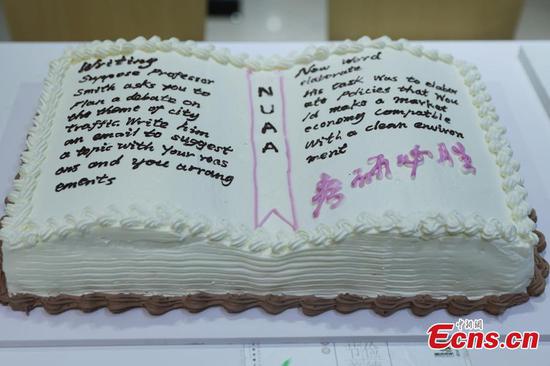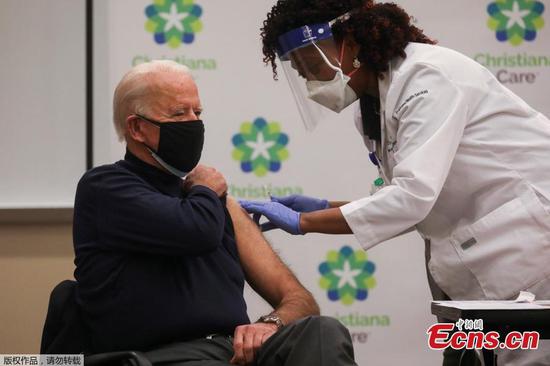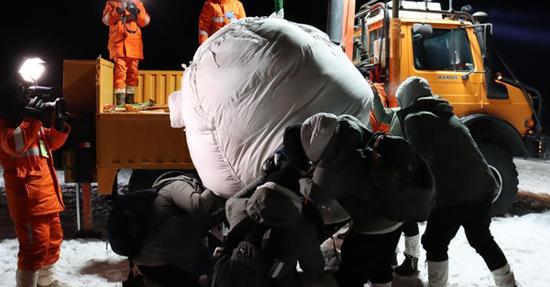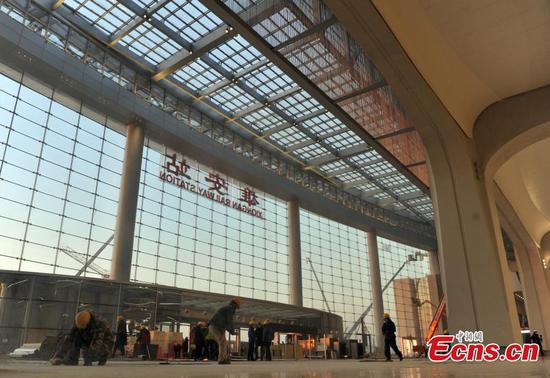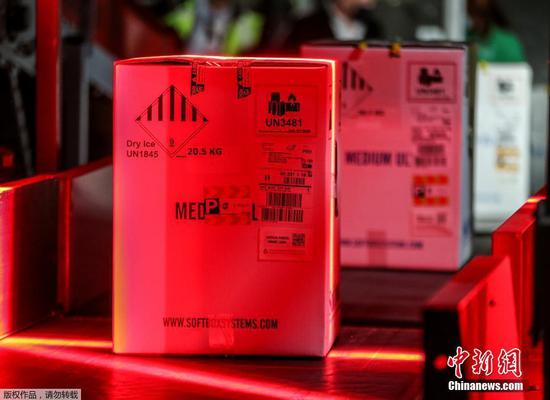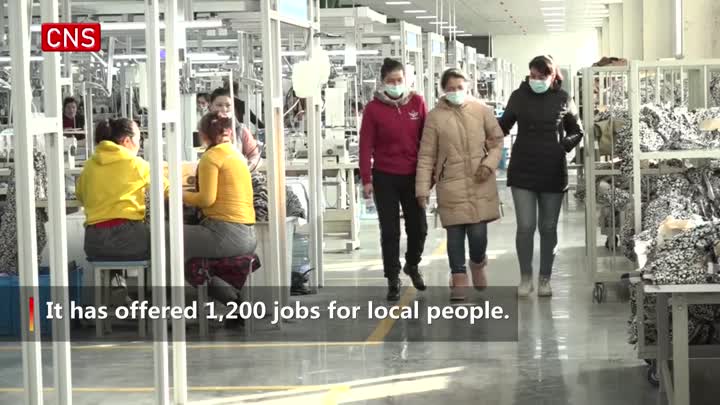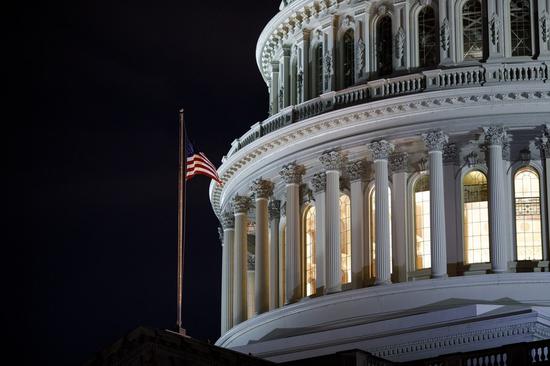
Photo taken on Dec. 20, 2020 shows the U.S. Capitol building in Washington, D.C., the United States. (Photo by Ting Shen/Xinhua)
The U.S. Congress approved a 900-billion-USD COVID-19 relief package late Monday following months of deadlock and strenuous negotiations, as Americans grapple with a rising economic and health fallout due to the pandemic.
The long-awaited relief package will likely cushion the impact of the pandemic, but economists and some lawmakers say it isn't enough to bolster a ravaged economy, calling for more aid measures and efforts to reign in the virus.
LONG-DELAYED RELIEF
The U.S. Senate approved the relief package a few minutes before midnight, along with 1.4 trillion dollars in government funding for the rest of the fiscal year, which ends on Sept. 30, 2021, sending the giant spending bill to President Donald Trump to sign into law.
The House of Representatives passed the package about two hours earlier.
The Congressional approval came after Democratic and Republican lawmakers reached a deal on Sunday, following months of deadlock over the size and scope of the relief package.
The 900-billion-dollar relief plan includes another round of direct payments for individuals, federal unemployment benefits - both at reduced levels - and more funding for Paycheck Protection Program to support small businesses. It also features hundreds of billions more for schools, testing and the distribution of vaccines.
For Democrats, the 900-billion relief package is much smaller than the 3.4-trillion proposal they passed in the House in May, and down from the 2.2-trillion trimmed version they offered in October. Some Senate Republicans, however, insisted on a relief package below 1 trillion dollars, and had pushed for a 500-billion-dollar bill before the election.
Lawmakers recently passed stopgap funding bills to avert a government shutdown and provide lawmakers more time to negotiate a deal in COVID-19 relief and long-term government funding.
With negotiators rushing to meet the shutdown deadline, some lawmakers complained of only having a few hours to read the 5,000-plus-page government funding/COVID-19 relief bill before casting their votes, and accused party leaders of ramming the bill through Congress.
"Instead of getting COVID relief out to people months ago we are being forced to vote on this monstrosity without having any meaningful time to go through it. This. Is. Insane," Kelly Armstrong, Republican congressman from North Dakota, tweeted Monday afternoon.
Echoing his remarks, Alexandria Ocasio-Cortez, a New York Democrat, said on Twitter that "this isn't governance. It's hostage-taking."
IS IT ENOUGH?
Calling the relief bill "a step forward," Bernie Sanders, Democratic Senator from Vermont, said "while we did not get as much as we wanted, the average family of four will receive a direct payment of 2,400 dollars."
"Will that help? Yes, it will. Is it enough? No, it is not," Sanders said. "In this horrific crisis, we must fight for more relief."
In order to reach an agreement, both parties agreed to drop their key demands: more aid to state and local governments, sought by Democrats, and liability protections for businesses, sought by Republicans. These have been key sticking points in the marathon negotiations.
"Though state revenues have been coming in better than feared, the absence of additional aid will lead to spending cuts and layoffs," Ryan Sweet, senior director at Moody's Analytics, wrote in an analysis.
Sweet noted that the key component of the agreement is an extension of unemployment insurance benefits with 300 dollars per week in added benefits, though lower than the previously approved 600 dollars.
"This is especially significant now, as unemployment is still high and likely to go higher during the coming months," Sweet said, adding that the latest stimulus will likely help to avoid a double-dip recession.
Latest data from the Labor Department's Bureau of Labor Statistics showed that the number of initial jobless claims rose for the second straight week to 885,000 in the week ending Dec. 12, marking the highest in three months.
The total number of people claiming benefits in all programs -- state and federal combined -- for the week ending Nov. 28 rose by 1.6 million to 20.6 million, signaling a stalled recovery in the labor market amid recent COVID-19 spikes.
The country reported over 400,000 new COVID-19 cases in a single day on Friday, setting an alarming new world record, according to data from the U.S. Centers for Disease Control and Prevention. On Monday, the center reported a seven-day average daily case increase of 239,604.
Adam Posen, president of Washington-based think tank Peterson Institute for International Economics, told Xinhua via email Monday that the relief package supports individuals and some businesses, and was worth passing because "we can relieve human suffering at zero interest rate cost," while noting that it "has little to do with the recovery."
"The recovery would come in the spring with the vaccine and the policy already underway, so long as there isn't a new public health disaster, whether or not this package passed," he said.










